Sales success isn't just about hiring great reps, it's also about placing them in the right markets with a clear strategy. Without well-structured sales territories, even the best teams can struggle with inefficiencies, missed opportunities, and uneven workloads.
By designing and managing territories strategically, businesses can optimize sales coverage, increase efficiency, and drive higher revenue growth. A well-planned approach ensures that sales reps focus on the right opportunities, in the right places, at the right time.
This guide explores why sales territory optimization is essential and how companies can use it to increase revenue, improve sales performance, and create a competitive edge.
Why Sales Territory Optimization Matters
Sales territory optimization is the process of structuring sales coverage to maximize efficiency and revenue potential. Without a clear strategy, sales teams risk:
- Wasted time and effort: Reps chase the same leads, overlap on accounts, or leave high-potential markets underserved.
- Inconsistent customer engagement: Without clear ownership, prospects and clients receive fragmented service.
- Uneven resource distribution: Some reps are overloaded while others struggle with too few opportunities.
A data-driven, structured approach eliminates these challenges by aligning territories with market demand, customer segments, and rep capacity. To learn more about how structured sales territories impact selling time, read our guide on optimizing sales territories for better sales efficiency.
How Sales Territories Directly Impact Revenue Growth
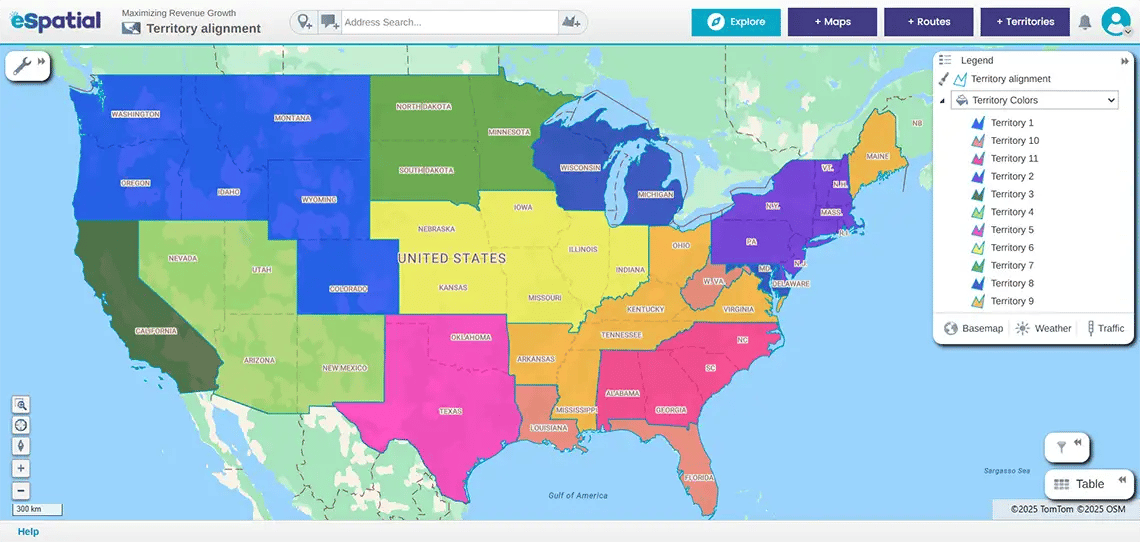
Well-structured sales territories can improve efficiency, create new revenue opportunities, accelerate sales cycles, and support long-term business scalability. Without strategic territory alignment, companies risk stagnant growth and inefficient sales execution.
Here's how effective sales territory management drives revenue growth at every stage of the sales process:
1. More Sales in Less Time
A well-structured territory reduces travel time, administrative tasks, and customer overlap, allowing sales reps to:
- Increase selling time by spending more hours in front of customers
- Reduce response times for prospects, accelerating deal velocity
- Spend less time on low-value leads and more time closing high-value deals
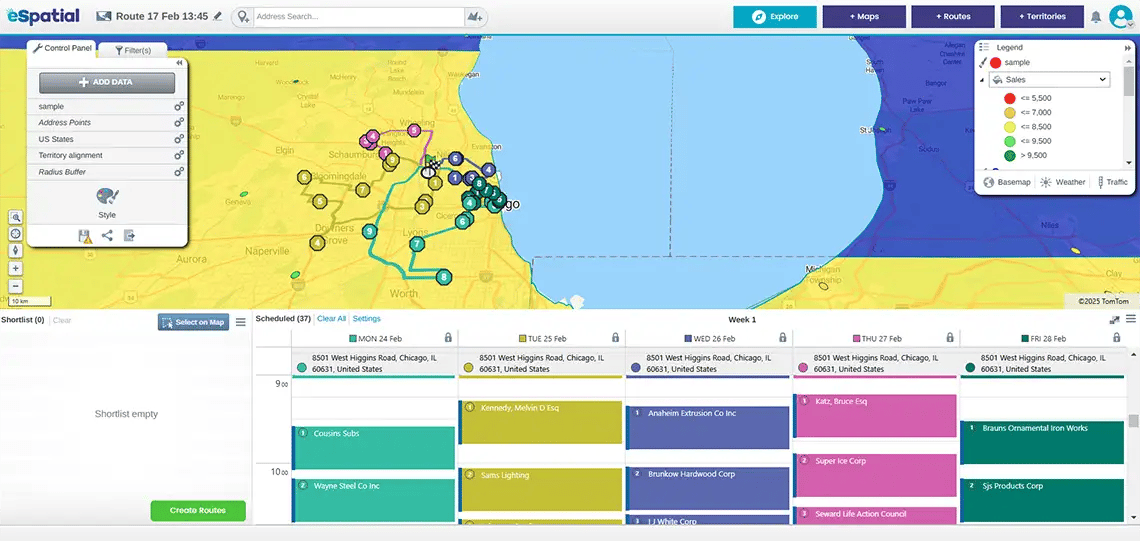
2. Higher Revenue Per Rep
Sales territories directly impact rep performance and quota attainment. A balanced, optimized territory ensures:
- Reps have enough high-potential accounts to meet revenue targets
- No rep is stuck in a low-opportunity market, limiting their earnings
- Sales leaders can distribute leads strategically for stronger overall performance
Companies that consistently adjust their territories based on market demand and customer data see up to 30% more revenue per rep than those using static, outdated territory models.
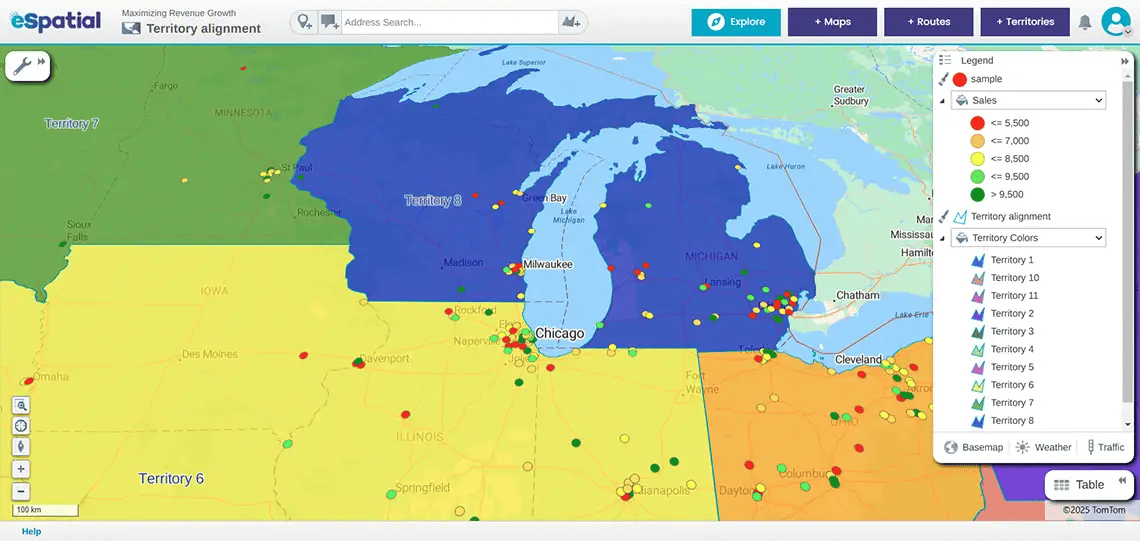
3. Smarter Market Expansion
Territory data provides a blueprint for growth. Instead of guessing where to expand, companies can:
- Identify emerging high-value regions before competitors
- Scale sales teams efficiently without over-hiring
- Adjust coverage dynamically as market conditions shift
Want to see how territory optimization fuels business growth?
Explore how eSpatial helps businesses optimize territories for maximum impact.
4. Revenue Forecasting & Pipeline Stability
Without structured territories, revenue patterns become unpredictable. Companies that leverage territory data for forecasting can:
- Identify underperforming markets early and adjust strategies
- Balance lead distribution to maintain a steady sales pipeline
- Plan long-term sales hiring needs based on data-driven growth potential
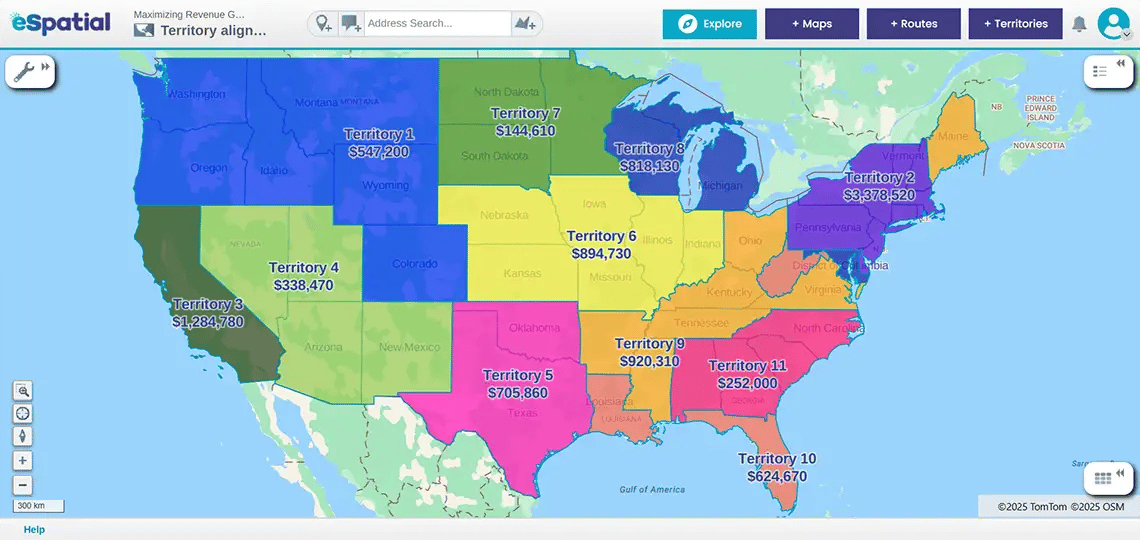
The Cost of Poorly Defined Sales Territories
When sales territories aren't structured properly, it has the potential to cripple revenue potential, frustrate sales teams, and weaken customer relationships. Without a clear strategy, sales reps waste time chasing the same leads, customers receive inconsistent service, and entire markets go untapped.
Here's what happens when sales territories are left to chance instead of built with strategy:
Overlapping Efforts Lead to Internal Competition
When sales territories aren't clearly structured, reps often chase the same prospects, leading to confusion for customers and wasted effort for teams. Instead of maximizing opportunities, sales reps spend time competing against each other for the same accounts.
Revenue Impact: Resources are wasted on duplicate efforts, while new potential customers in untapped areas remain overlooked.
Uneven Coverage Leaves Revenue on the Table
Without a data-driven territory plan, some regions receive too much attention, while others are neglected entirely. High-growth areas—such as new business hubs or emerging markets—may go unnoticed simply because no one is assigned to them.
Revenue Impact: Competitors that recognize and act on these opportunities will gain a foothold in markets your business hasn't covered.
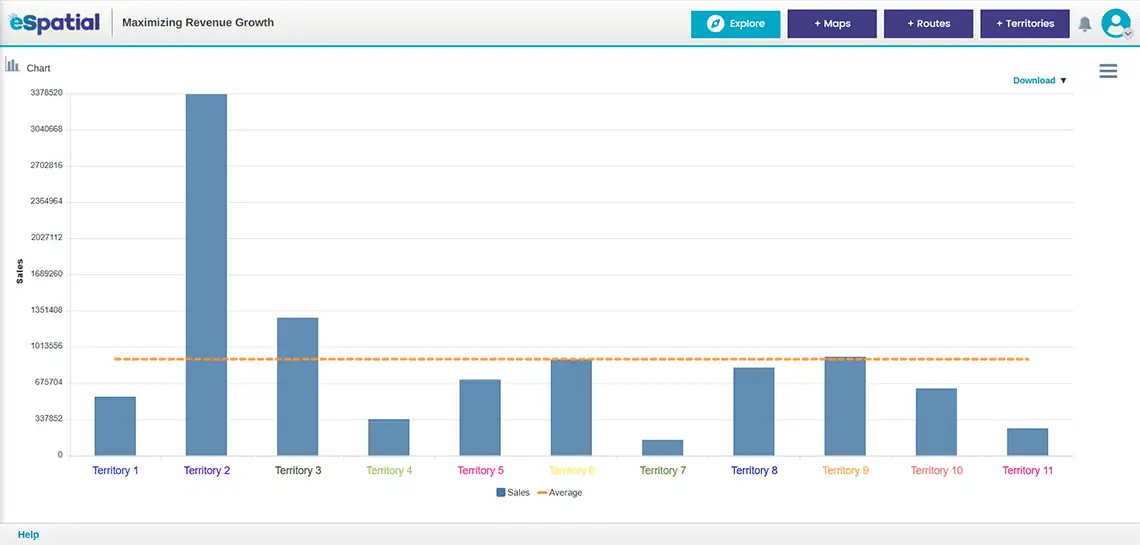
Customer Experience Becomes Inconsistent
If customers don't have a dedicated point of contact, service becomes fragmented and unpredictable. Reps may engage sporadically, follow-ups get delayed, and long-standing relationships weaken. Over time, trust erodes, and customers take their business elsewhere.
Revenue Impact: Research shows that poor customer experiences drive billions in lost sales annually. Without structured territories, maintaining strong relationships becomes much harder.
Unbalanced Workloads Lead to Sales Team Burnout
Poorly structured territories create an imbalance in workload distribution—some reps are overwhelmed, while others don't have enough opportunities. This leads to:
- Overworked reps struggling to meet impossible quotas
- Underutilized reps feeling disengaged and unmotivated
- Higher turnover, requiring constant rehiring and training
Revenue Impact: When top sales talent leaves, businesses lose momentum, expertise, and customer relationships—all of which take time to rebuild.
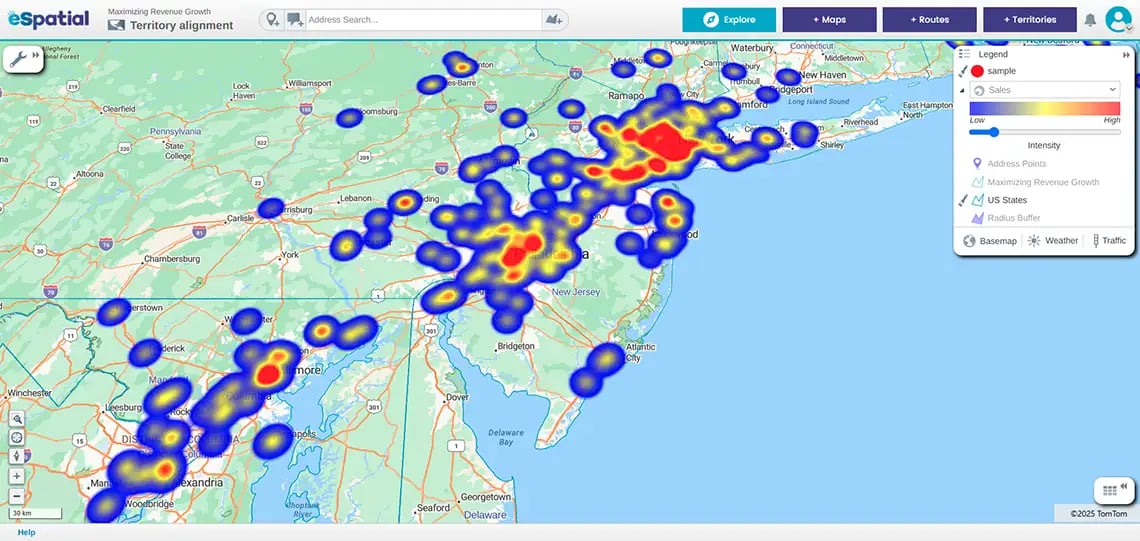
Lack of Performance Tracking Stalls Growth
Without structured territories, measuring success becomes difficult. Which regions are driving the most revenue? Where should sales efforts be increased? Without clear territory data, companies can't answer these questions effectively.
Revenue Impact: Businesses that fail to track and refine their territory strategies struggle to scale, leading to stagnation rather than growth.
How to Optimize Sales Territories for Revenue Growth
Sales territories aren't something you set once and forget. Markets shift, customer needs evolve, and sales teams grow—your territories should keep up. A well-structured sales territory strategy ensures that every rep is positioned for success, every customer receives the right level of attention, and every market segment is fully covered.
Companies that take a proactive, data-driven approach to sales territory optimization consistently outperform those relying on outdated or manual methods. Here's how to build a revenue-driving territory strategy:
1. Use Territory Mapping Software to Visualize & Optimize Coverage
Too often, sales teams rely on gut instinct to define territories—leading to overlap, gaps, and inefficiencies. Instead, territory mapping software transforms raw data into actionable insights.
With eSpatial's mapping technology, businesses can:
- See customer distribution at a glance: Visualizing customer locations helps uncover underserved regions and optimize rep assignments
- Balance workloads and revenue potential: No more overloading one rep while another struggles with too few opportunities
- Automate territory realignment as markets shift: Ensure teams stay agile and can adjust to demand, seasonality, or expansion
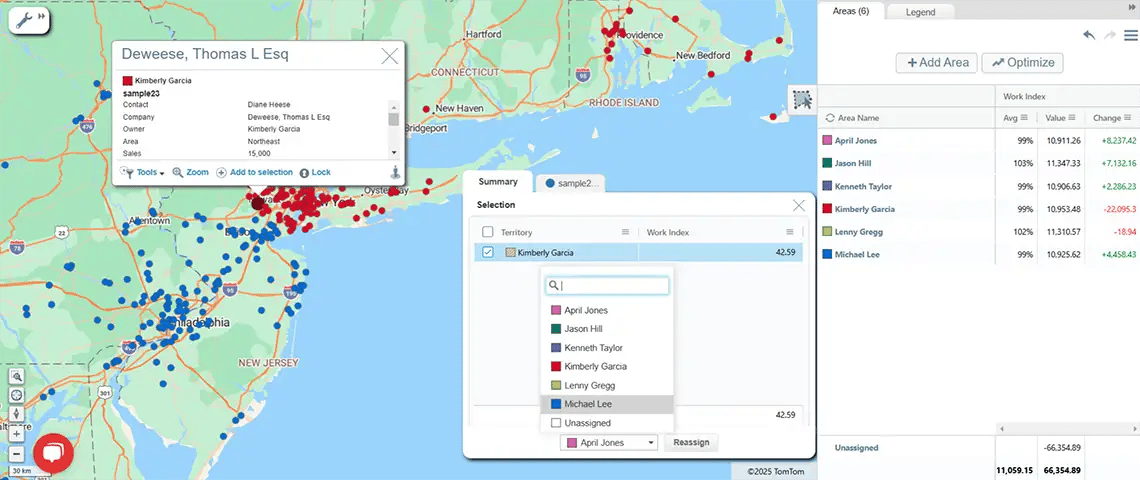
Rather than manually adjusting maps and spreadsheets, companies using eSpatial can automate their territory planning, making changes in minutes instead of weeks.
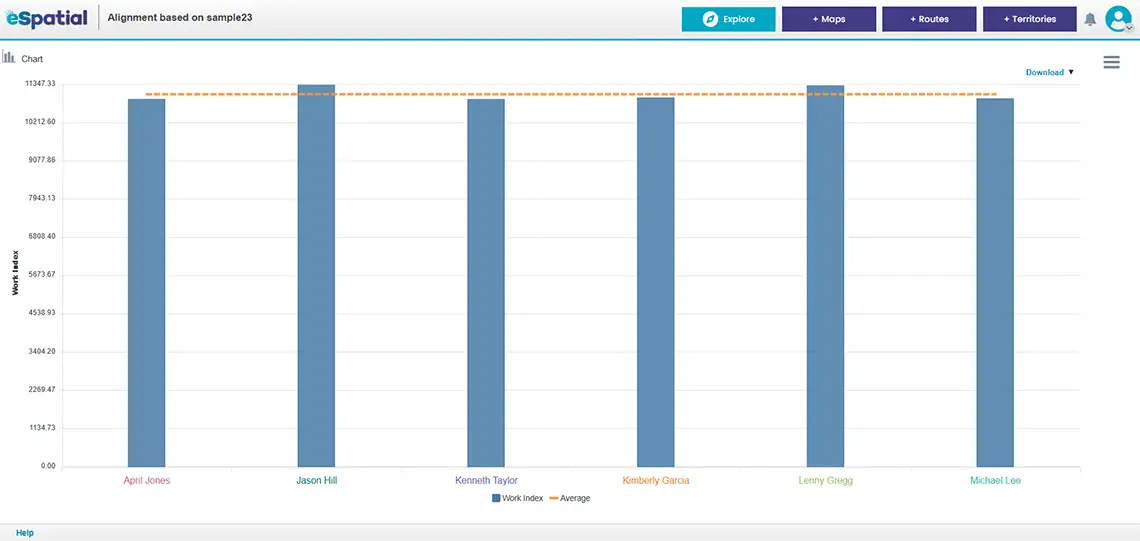
Learn more about our eSpatial's territory optimization tool to maximize your sales potential.
2. Leverage CRM & Sales Data for Smarter Decision-Making
Sales territory management isn't just about where reps are assigned—it's about tracking and optimizing performance. When territories are connected to real-time sales data, companies can make adjustments that actually drive revenue instead of relying on assumptions.
By integrating eSpatial with your CRM, businesses can:
- Track sales performance by territory: Identify which regions are exceeding targets and which need more attention
- Adjust rep assignments based on customer demand: Reallocate resources dynamically to match growth opportunities
- Improve response times & efficiency: Ensure reps aren't stretched too thin, so leads receive faster follow-ups and better engagement
Without data-backed insights, businesses risk keeping underperforming territories stagnant while missing high-growth opportunities. eSpatial makes territory optimization measurable and scalable.
3. Continuously Optimize Territories to Keep Pace with Growth
A sales territory plan is only as strong as its ability to evolve. If businesses don't regularly reassess and adjust, even the best-designed territories can become outdated and ineffective over time.
With eSpatial's advanced optimization tools, businesses can:
- Run regular performance reviews: Identify territory gaps before they impact revenue
- Scale territories as the business grows: Expand into new markets without disrupting sales team efficiency
Companies that treat sales territories as a living strategy, rather than a one-time setup, drive long-term, predictable growth. For a deeper dive into best practices for structuring and managing sales territories, read tips for sales territory management.
Unlock Revenue Potential with Smarter Sales Territory Strategies
Sales teams can only perform at their best when their territories set them up for success. Without a structured approach, efficiency drops, customer relationships suffer, and revenue potential goes untapped.
An optimized sales territory strategy ensures:
- Reps focus on the right customers in the right places
- Sales leaders make smarter, data-driven decisions
- Growth isn't left to chance—but built into the plan
eSpatial's territory mapping software makes it easy to design, optimize, and refine sales territories—so your team can sell smarter, faster, and more effectively.
 by
by 
